Comfrey: What you need to know about the plant that 'looks like borage a couple of gins into a long weekend'
Mark Diacono on the beautiful and untamed joy of comfrey.
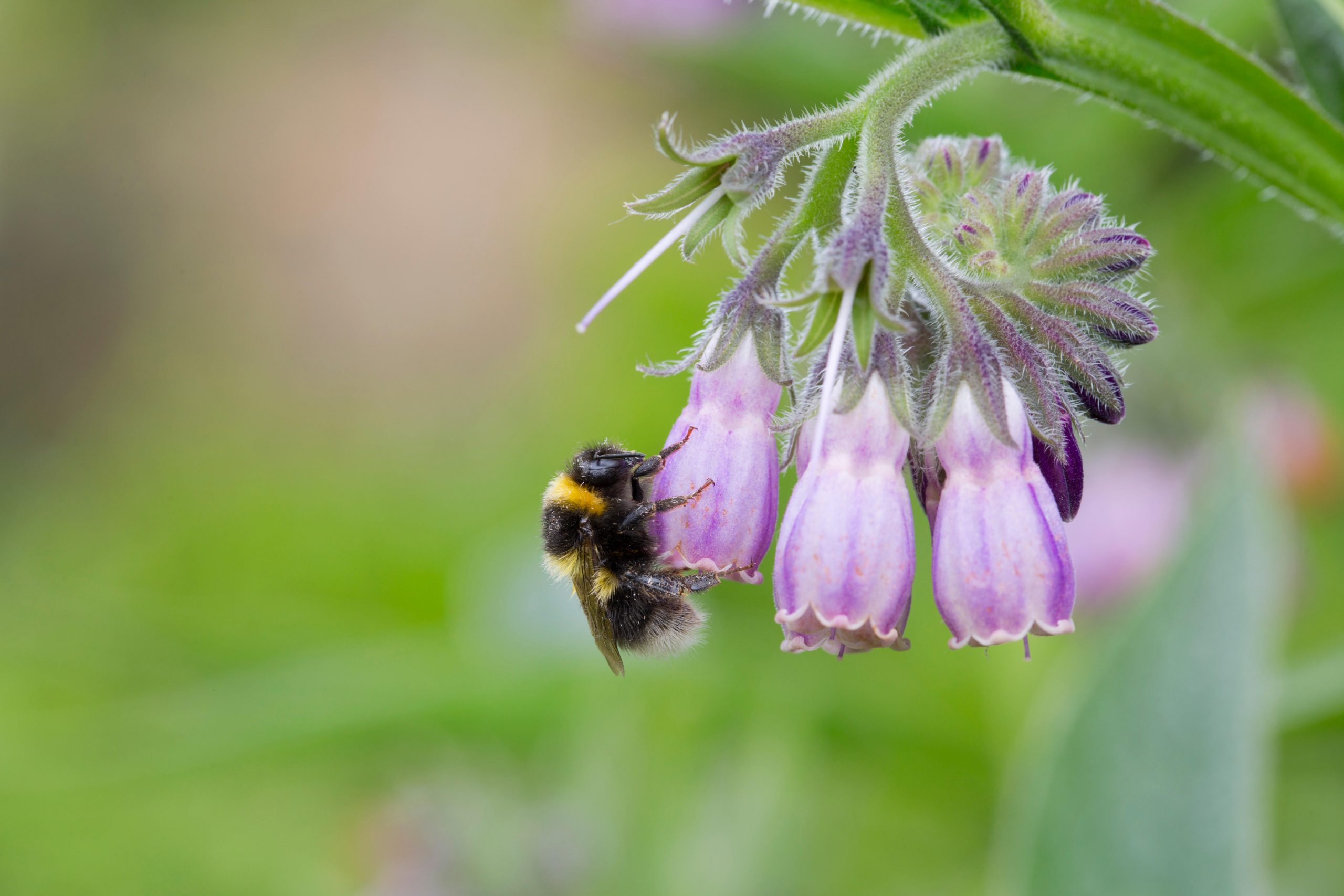

Comfrey is an upright, clump-forming perennial that looks a little like borage a couple of gins into a long weekend off. Its pointy leaves — somewhat furry and papery to the touch — are carried below drooping clusters of pinky-purple and white flowers that appear in spring through summer. It is quite beautiful in its untamed way.
It grows quickly, reaching 30in or so high and wide over a few months. Meanwhile, its roots drive deep into the soil, drawing otherwise inaccessible minerals into the plant to accumulate above ground, making it a naturally rich source of the holy trinity of plant nutrients — nitrogen, phosphorus and potassium — which can bring such benefits to the rest of the garden. Its richness in potassium is particularly valuable to fruiting plants.
There are a number of ways of putting these nutrients to good use. Firstly, comfrey tea. I make this a few times a year, starting in spring. The easiest way is to fill a net bag (I use an old onion net) with torn up comfrey leaves and suspend it from a cane into your water butt. Over a month or so, it will slowly leach its minerals into the water; you’ll know when it’s ready to use, as it smells as if something with a very poor diet died a long time ago. It should be the colour of very weak tea. Dilute it if needed, as anything stronger is a waste.
Alternatively, you can invert a large water bottle (leave the cap on), cut the bottom off and fill the bottle with comfrey leaves. Place a brick or similar on top. Over the next fortnight or so, the leaves will break down under the weight of the brick and release a dark liquid. To use it, simply undo the lid, decant what you need and dilute it with about 15 parts water. Once established, you can take three or four cuts of comfrey over the growing season, providing free nutrients and, in turn, more delicious produce.
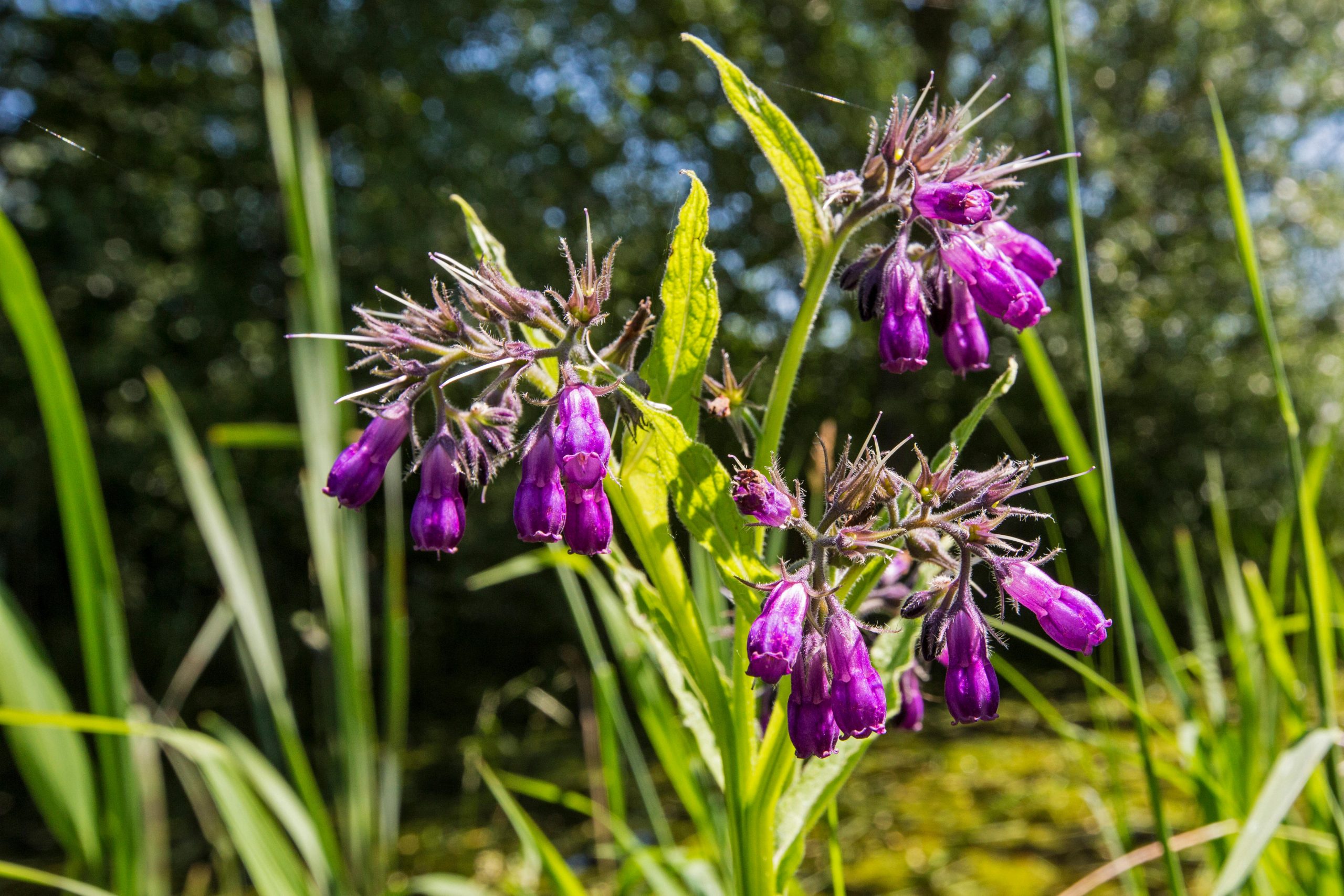
The potassium in comfrey tea is especially good for any fruiting plants; most of mine goes on aubergines, chillis, tomatoes, courgettes and beans. I give them a good watering every fortnight from flowering, which they repay later in the season with a heftier, healthier harvest. If you have grape vines or stone fruit, you can use comfrey tea as a foliar feed, spraying it direct onto the leaves where it will be taken in readily.
For plants that need nitrogen for green growth — peas, beans, cut-and-come-again leaves and so on — you can follow exactly this method, but using nettles. Not that it smells any better.
If you have fruit trees, you could do worse than plant comfrey around the base of the tree, leaving a foot or so from the trunk. It will mulch out any grass that competes with the root zone of the tree, the flowers bring in pollinating and naturally pest-predating insects and simply mowing or strimming the leaves will act as a cut-and-come-again mulch that releases minerals and nutrients into the tree’s root zone as it degrades. If you grow potatoes, lay an early cutting of the leaves under each seed potato; they will fertilise the developing crop as they decompose.
Sign up for the Country Life Newsletter
Exquisite houses, the beauty of Nature, and how to get the most from your life, straight to your inbox.
Comfrey also acts as a powerful compost accelerator. Even if you get the mix of greens and browns right, comfrey or nettles — in shredded leaf or liquid form — added to the pile will move everything along more quickly.
Generic comfrey might suit you well in an orchard situation or if you have a little space to dedicate to it, but, for a little more control over its spread, look for Bocking 14 seedlings. These are self-sterile and hence don’t set seed, so won’t expand the patch in the way regular comfrey can.
To start or extend a patch of comfrey, you can begin with seeds or young plants. If you have some already, simply dig up a root of it in winter, slice it into £1-coin thicknesses and bury it an inch into a 3½in pot of compost and allow roots to develop, ahead of late spring planting.
Comfrey can live for 20 years or more, so choose a spot carefully; avoid chalky soil and give it at least partial sunshine and it should thrive. Although it might be tempting to dig up a little wild comfrey to get you going, it tends to be much less productive, less nutrient-rich and not as healthy as garden comfrey.
Mark Diacono grows edibles, both usual and unusual, at Otter Farm in Devon (www.otterfarm.co.uk). His From Scratch: Ferment (Quadrille, £12.99) is out now
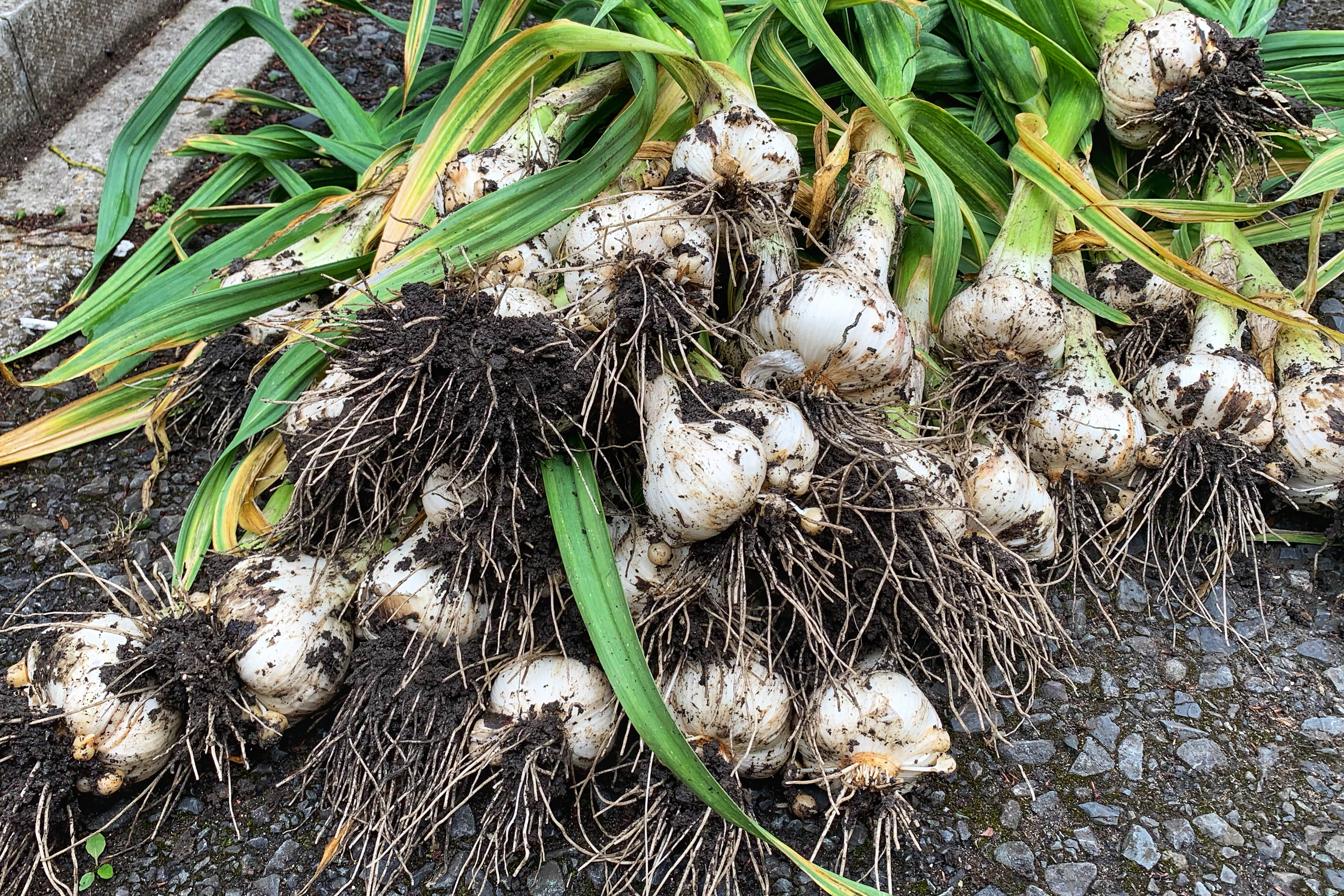
Credit: Getty Images
How to grow garlic: Delicious, lucky and superbly easy to cultivate
Mark Diacono teaches us how to grow garlic.
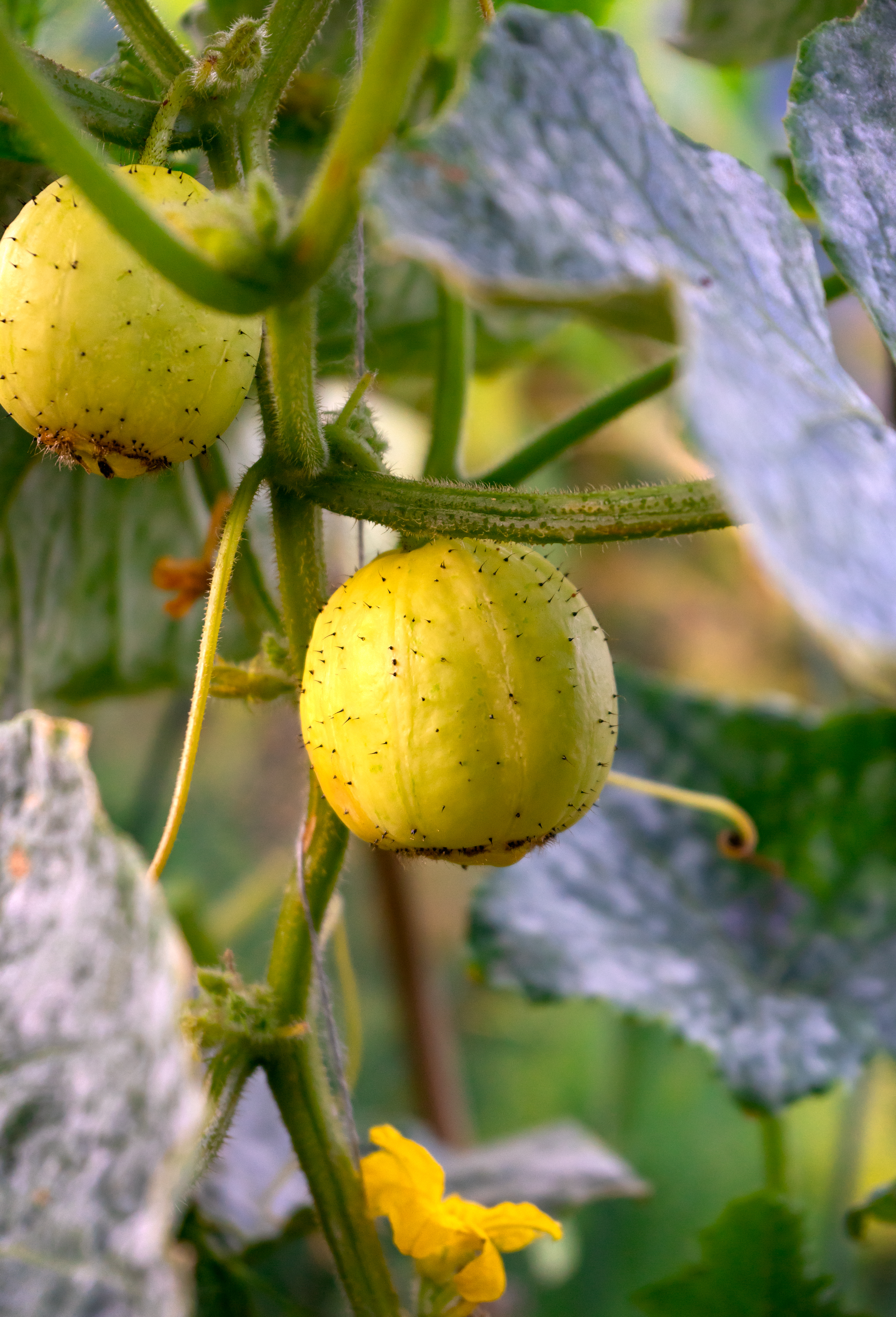
Everything you need to know to grow your own cucumbers
Food writer Mark Diacono shares his tips on how to grow cucumbers and three of his favourite varieties to try.
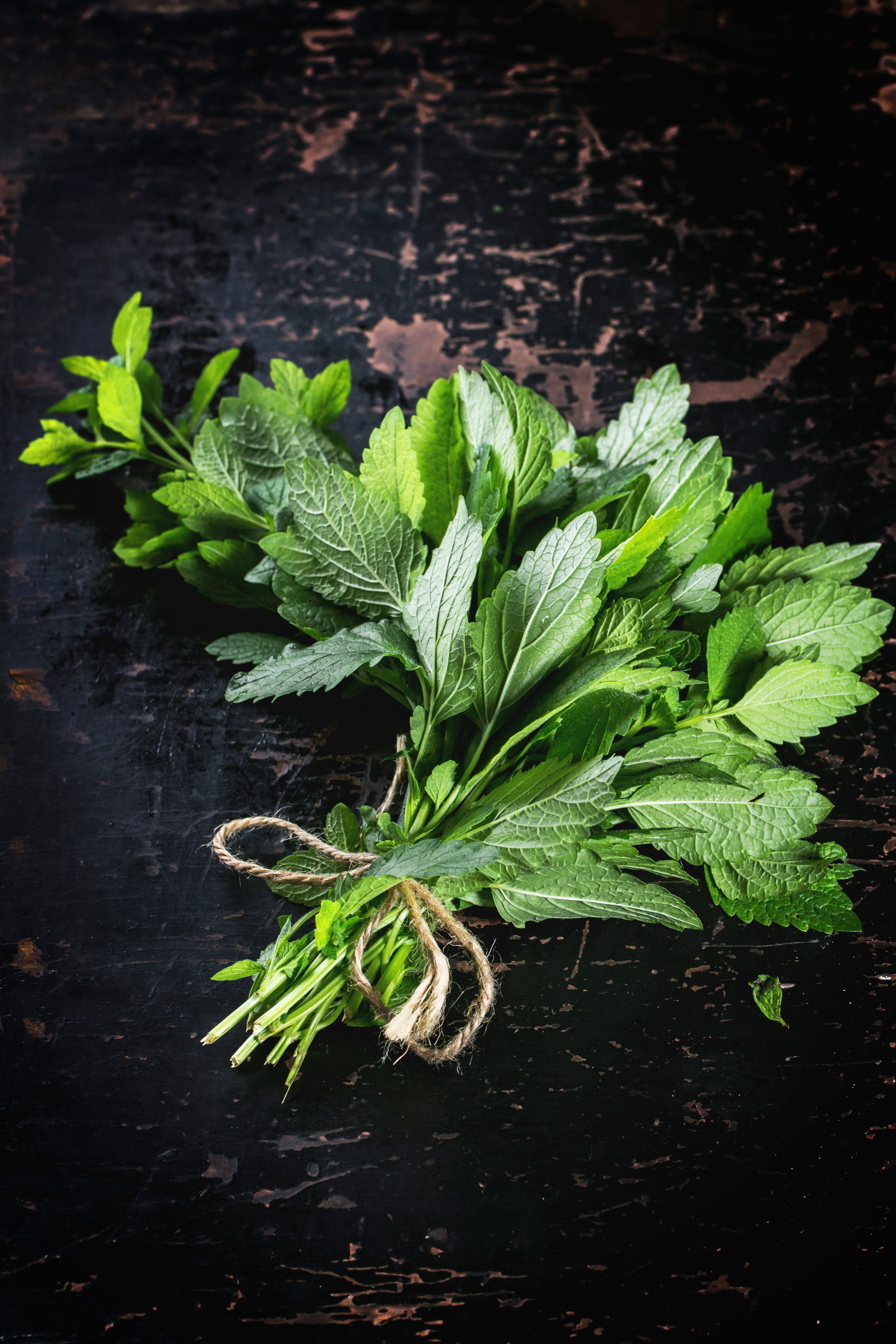
Credit: Alamy
Cultivating mint: What varietals to plant, where to plant them and whether they should be used for jelly or juleps
Mark Diacono explains why mint is for even the incurably incompetent horticultural enthusiast.
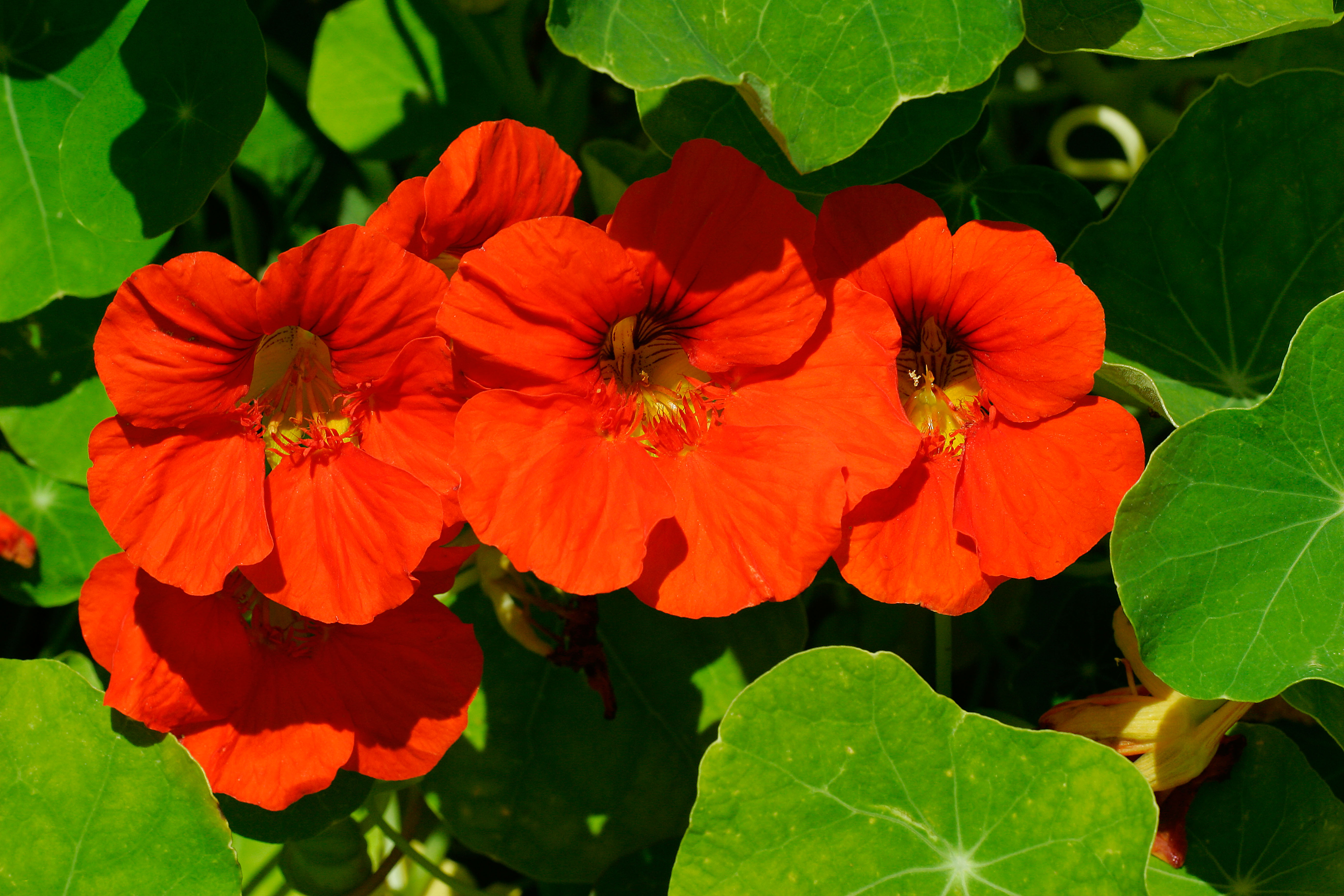
Credit: Alamy
The top salad leaves to grow in your garden for summer garnishes
Mark Diacono tells us his top salads to plant to accompany barbecues this summer season.
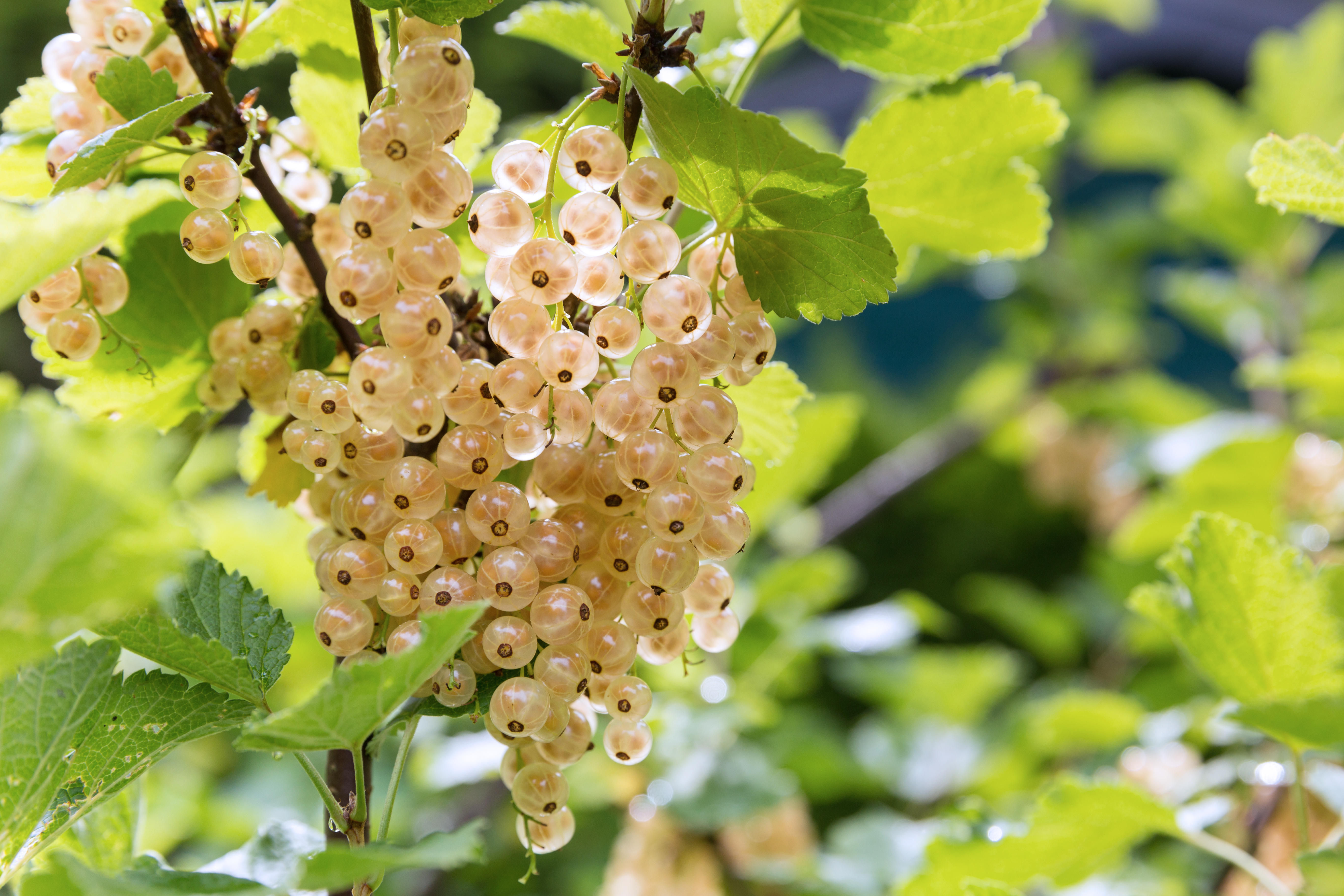
How (and why) to grow your own white currants: 'Scatter them over a knickerbocker glory'’
Mark Diacono shares his top tips on how to plant white and red currants, which varieties to choose — and
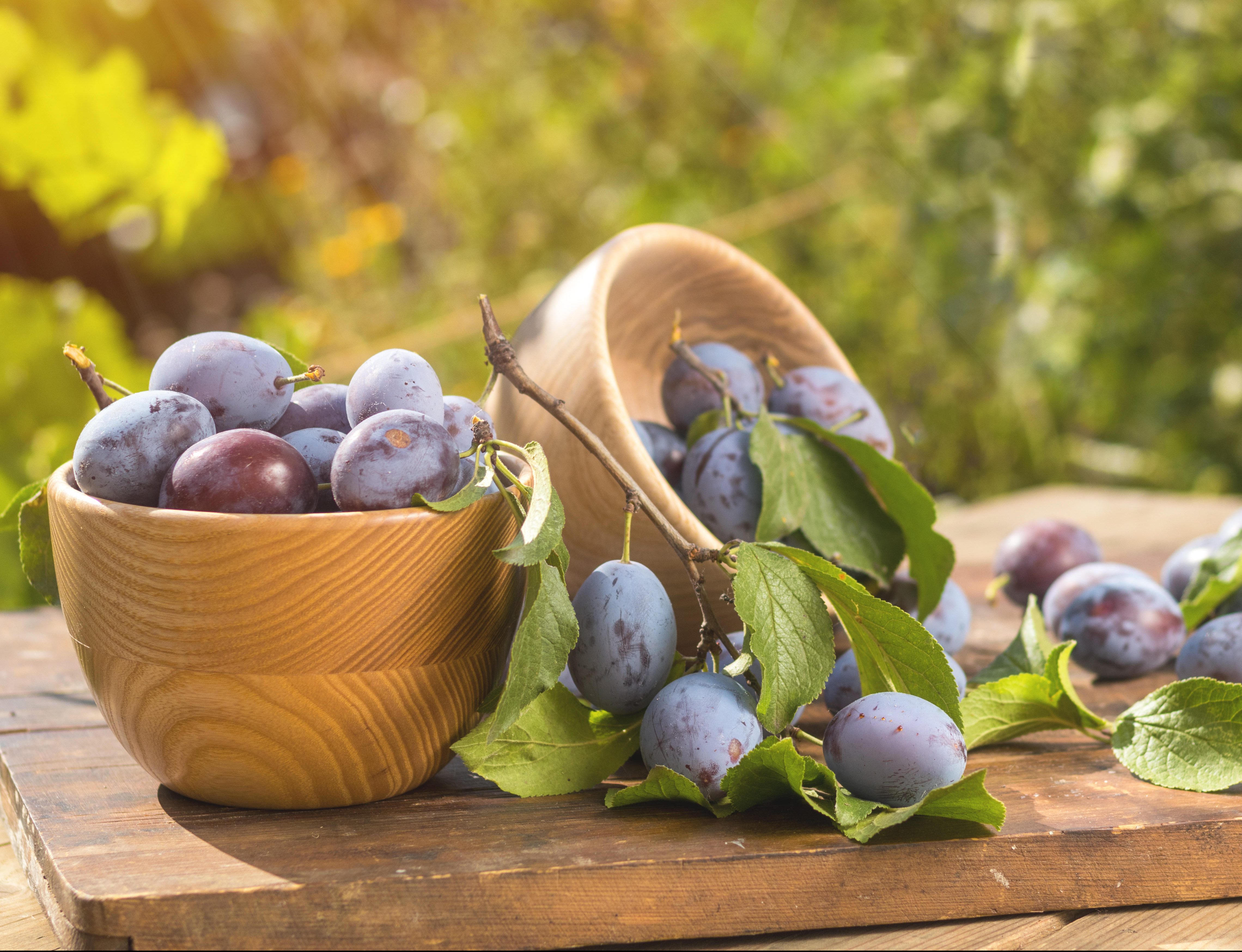
Plums to grow, plums to show, and plums to pop in your gin
Mark Diacono picks his favourite plums — and their close relatives, damsons, mirabelles, bullaces and gages.
Mark is lucky enough to spend most of his time eating, growing, writing and talking about food. He has written fourteen award-winning books, including A Year at Otter Farm and A Taste of the Unexpected (both won Food Book of the Year, and Garden Book of the Year). Known for growing everything from Szechuan pepper to pecans to Asian pears, Mark's refreshing approach to growing and eating has done much to inspire a new generation to grow some of what they eat. He was involved in the early days of River Cottage, appearing in the TV series, and writing four River Cottage books. Mark writes to a global audience on his best-selling Substack: Mark Diacono’s Abundance.
-
 RHS Chelsea Flower Show: Everything you need to know, plus our top tips and tricks
RHS Chelsea Flower Show: Everything you need to know, plus our top tips and tricksCountry Life editors and contributor share their tips and tricks for making the most of Chelsea.
By Amie Elizabeth White
-
 Hidden excellence in a £7.5 million north London home
Hidden excellence in a £7.5 million north London homeBehind the traditional façades of Provost Road, you will find something very special.
By James Fisher